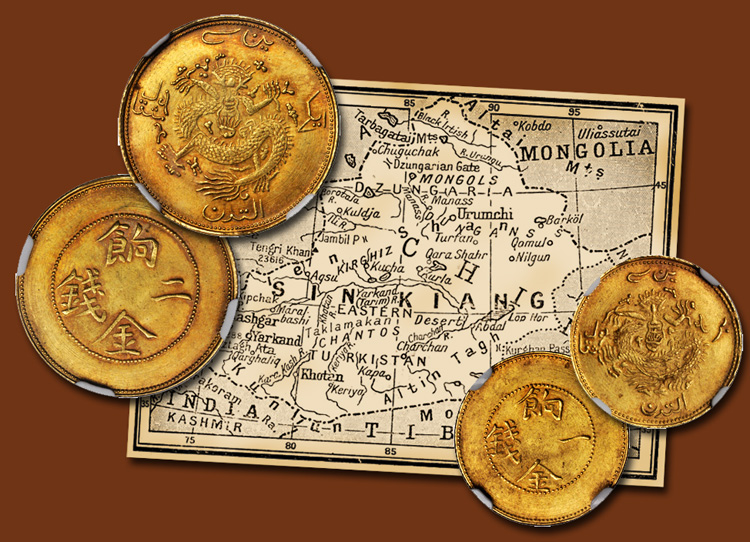
Both coins are very similar in design, with the only major difference the denomination and size. The obverse pattern is fairly simple in design, yet artfully done. Within a beaded circle there are four Chinese characters in the traditional North – South and East – West layout. The inscription translates to “Army Ration Gold 2-mace.” The smaller coin’s inscription states: “Army Ration Gold 1-mace.” This inscription reinforces the purpose of these coins as payment for soldiers garrisoned in the province. The reverse pattern for these coins is far more elaborate and eye-catching. The reverses contain the Turki inscription to facilitate trade with the Uyghur populace. The inscription states the same phrase as the obverse; “Army Ration Gold 2-mace” and “Army Ration Gold 1-mace” for the two denominations. These four symbols follow the same North – South and East – West pattern as the obverse. However, this Turkic legend is found on the outer edge of the coin. The inner design is dominated by the iconic dragon design made famous by various provincial issues of China. The basic design remains the same, with a slight variation in the style. The dragon appears in the coiled “S” pattern with its tail pointing left. The difference in style is most notable in the cloud, fiery pearl, and the dragon’s head. The design of these coins reflects the nature of the province itself. The name Sin-Kiang translates to “New Frontier” and these coins show the rough nature of the distant Chinese West. These fascinating pieces are not often seen in major auctions, and will certainly be highlights in our upcoming August Hong Kong show.
Look for this and other Asian numismatic rarities in our upcoming August Hong Kong Sale. Preview this impressive coin along with the rest of our auction this August at the Stack’s Bowers and Ponterio office located in Irvine California. For details please refer to the Auction Schedule/Details link under Current Auctions at www.StacksBowers.com. To schedule an appointment, please call 800.566.2580.





